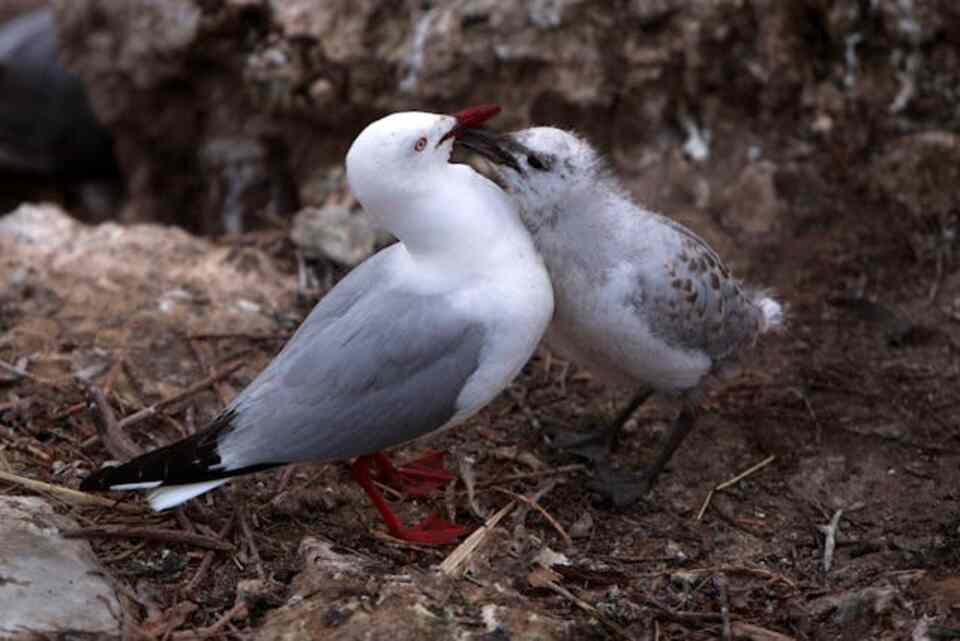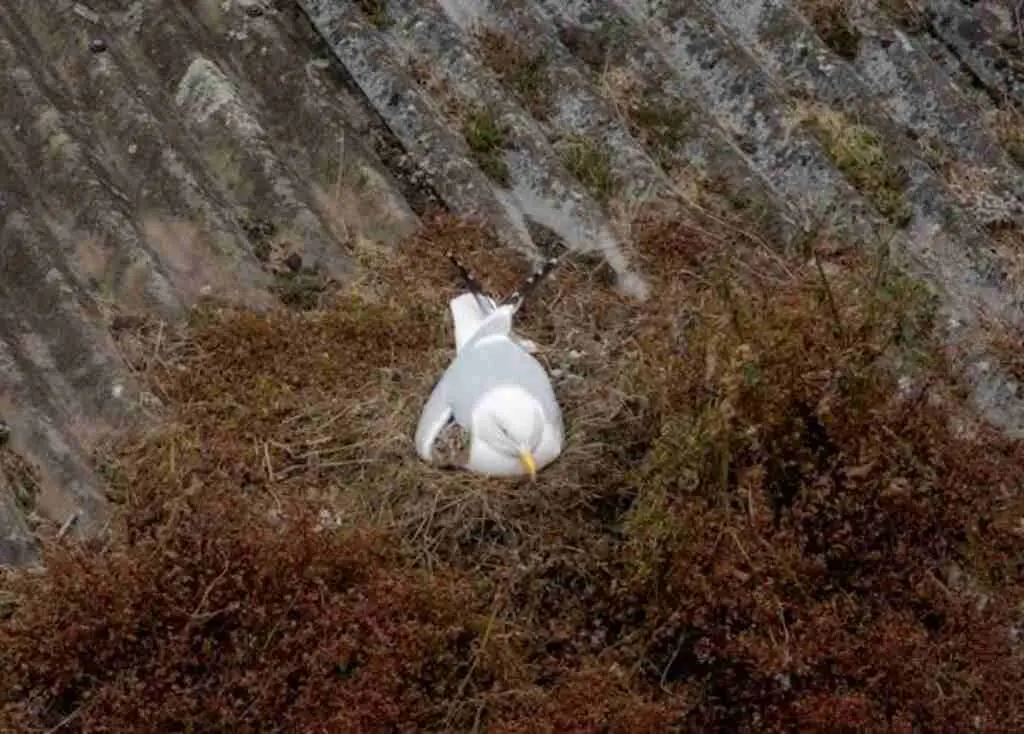Seagulls, with their distinctive appearance and characteristic cries, are commonly found along coastlines worldwide. One fascinating aspect of these seabirds is their nesting habits. Understanding where seagulls nest can provide valuable insights into their behavior and biology.
Table of Contents
Where Do Seagulls Nest?
Seagull Nesting Sites
Seagulls typically nest in large colonies called a rookeries or gulleries. These colonies are often located on cliffs, islands, or secluded beaches away from potential predators. Seagulls prefer nesting in areas with easy access to food sources such as fish, shellfish, and even human waste in urban environments.
Nest Construction
Seagulls are known for their resourcefulness when it comes to nest building. They use a variety of materials including twigs, grass, seaweed, and debris they find in their surroundings. Seagull nests are often shallow depressions lined with softer materials to protect their eggs and chicks.
Breeding Season
Seagulls usually start breeding in the spring and continue through the summer months. The breeding season is a critical time for seagulls as they establish nests, lay eggs, and raise their young. During this time, seagulls can become territorial and protective of their nesting sites.
Urban Habitats
In addition to coastal areas, seagulls have adapted to nesting in urban environments. Flat rooftops, abandoned buildings, and even chimneys provide seagulls with alternative nesting sites in cities. The abundance of food waste in urban areas has attracted seagulls to these locations for nesting.
Predation and Protection
Seagull eggs and chicks are vulnerable to predation by other birds, mammals, and even humans. To protect their young, seagulls exhibit defensive behaviors such as dive-bombing intruders and vocalizing loudly to deter threats. Conservation efforts often focus on protecting seagull nesting sites to ensure their continued survival.
Migration and Dispersal
While some seagull species are year-round residents in their habitats, others are migratory and travel long distances to breeding grounds. Understanding the migration patterns of seagulls is essential for monitoring their populations and conservation status. By studying where seagulls nest during different times of the year, researchers can gather valuable data on their behavior and movements.
Human Interactions
Seagulls have become accustomed to human presence in coastal areas and urban settings. However, interactions with humans can lead to conflicts, especially when seagulls scavenge for food in populated areas. It is important for communities to implement strategies to coexist with seagulls while minimizing negative impacts on both humans and birds.
Knowing where seagulls nest offers a glimpse into their fascinating world. From coastal cliffs to city rooftops, seagulls have adapted to various environments for nesting and breeding. By studying and protecting seagull nesting sites, we can appreciate these remarkable birds and ensure their conservation for future generations.

Understanding the Behavior of Seagulls
Seagulls are fascinating coastal birds that can be found in various parts of the world. One common question that arises when observing these birds is, “where do seagulls nest?”. Understanding the behavior of seagulls and gaining insights into their daily lives can provide valuable information on their nesting habits.
Insights into Seagull Nesting Habits
Seagulls typically nest in large colonies called rookeries or gulleries. These nesting sites are often located on cliffs, dunes, rooftops, and even on offshore islands. Seagulls prefer to nest in areas that provide a clear view of their surroundings, allowing them to keep an eye out for potential predators.
Preferred Nesting Locations
One of the reasons seagulls choose specific nesting locations is for easy access to food sources. Being coastal birds, seagulls feed on fish, crustaceans, and various types of marine life. Nests are usually built close to their food supply, enabling them to make quick trips to the water in search of food.
Nesting Materials and Construction
Seagulls are resourceful birds when it comes to building their nests. They often use a combination of natural materials such as seaweed, grass, and twigs, along with human-made materials like plastic and fishing nets. The male and female seagulls work together to build the nest, with the male typically gathering most of the materials while the female arranges them.
Nesting Season
Seagulls have a specific nesting season, which varies depending on their location. In general, seagulls begin nesting in late spring or early summer when food sources are abundant, and the weather is favorable. The nesting period is crucial for seagulls as they raise their young and teach them essential survival skills.
Nesting Behavior
During the nesting season, seagulls can exhibit territorial behavior to protect their nests and young chicks. They are known to be vocal birds, often calling out to each other as a form of communication. Seagulls are also attentive parents, taking turns to incubate the eggs and feed their chicks once they hatch.
Human Interaction and Conservation
Human activities can sometimes impact seagull nesting sites. Disturbances near nesting colonies can cause stress to the birds and may result in nest abandonment. It is essential for coastal communities to be aware of seagull nesting habitats and take measures to protect these areas for the birds to thrive.
Understanding where seagulls nest provides valuable insights into their behavior and lifestyle. By respecting their nesting habits and natural habitats, we can coexist harmoniously with these coastal birds and appreciate the beauty they bring to our shores. Next time you spot a seagull, take a moment to appreciate the intricate patterns of their daily lives, from nesting to raising their young, in the ever-changing coastal environment.
Conclusion
Seagulls, with their distinctive cries and graceful flight patterns, have long been a fascinating subject for bird enthusiasts and casual observers alike. In this comprehensive guide, we have delved into the mysterious world of where seagulls choose to nest. From rugged sea cliffs to urban rooftops, these adaptable birds demonstrate a remarkable ability to thrive in a variety of habitats.
Understanding the behavior of seagulls is key to appreciating their unique place in the ecosystem. By gaining insights into their daily lives, such as their feeding habits and social interactions, we can develop a deeper connection with these coastal birds. Whether they are scavenging for food along the shoreline or engaging in elaborate courtship displays, seagulls never fail to captivate our attention.
When it comes to nesting, seagulls exhibit a remarkable level of resourcefulness. While some species prefer remote islands or secluded beaches, others have adapted to urban environments where they coexist with humans. By understanding the factors that influence their nesting choices, such as availability of food and protection from predators, we can better appreciate the strategies that seagulls employ to ensure the survival of their offspring.
In coastal regions around the world, seagulls play a crucial role in maintaining the delicate balance of the ecosystem. As opportunistic feeders, they help keep beaches and shorelines clean by consuming carrion and scavenging for discarded food. By studying their nesting habits and behaviors, researchers can gain valuable insights into the health of marine environments and the impact of human activities on coastal ecosystems.
While seagulls may sometimes be viewed as a nuisance, especially in urban areas where they scavenge for scraps of food, it is important to remember that they are simply adapting to the changing world around them. By observing these charismatic birds in their natural habitats and learning more about their nesting habits, we can foster a greater appreciation for the role they play in coastal ecosystems.
The world of seagulls is a rich tapestry of adaptation and survival. From their choice of nesting sites to their daily routines, these birds continue to intrigue and inspire us with their resilience and resourcefulness. By taking the time to understand and respect these fascinating creatures, we can ensure that future generations will also have the opportunity to marvel at the sight of seagulls soaring gracefully above the waves.



